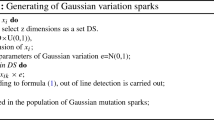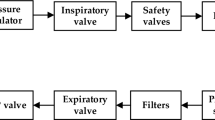Abstract
A surgical procedure namely the Cochlear implantation aims in fitting the electronic device the cochlear implant. This electronic device helps person with moderate to severe hearing loss. It becomes very important to treat children with auditory deprivation much earlier, since it prohibits their language development skill too. This research aims to develop a model that can be used to guide Cochlear Implants (CI) programming for new patients in the children of 5 to 10 ages using visual cross modal data obtained from previously programmed patients. The cohort chosen is bilateral congenitally deaf children. This age group is selected since their language development is affected due to their auditory deprivations. The design is based on obtaining the analysis of cross modal plasticity using the visual evoked potential. AI based techniques, which is formed using the patient database. The goal is to use patients, real time database collected from the children and observe if it is likely to discover patterns in the data that can predict something about future patients. The resolution would be a program that can discover factors for the auditory deprived. The objective of this work is to apply Long Short-Term Memory (LSTM) network based Artificial Intelligence (AI) model to discover the unknown pattern. LSTM is suited to classify, process and predict time series given time lags of unknown duration. Relative insensitivity to gap length gives an advantage to LSTM over alternative RNNs. To augment an additional performance, the investigation comprises Enhanced Swarm based Crow Search Optimization (ESCSO) to identify optimal weights. The results exhibit the dominance of suggested ESCSO based LSTM technique over other techniques.








Similar content being viewed by others
Data availability
Not Applicable.
References
Abdelaziz AY, Fathy A (2017) A novel approach based on crow search algorithm for optimal selection of conductor size in radial distribution networks. Eng Sci Technol Int J 20:391–402
Baron S, Blanchard M, Parodi M, Rouillon I, Loundon N (2019) Sequential Bilateral cochlear implants in children and adolescents: outcomes and prognostic factors. Eur Ann Otorhinolaryngol Head Neck Dis 136(2):69–73
Bianchin G, Tribi L, Formigoni P, Russo C, Polizzi V (2017) Sequentialpediatric bilateral cochlear implantation: the effect of time interval between implants. Int J Pediatr Otorhinolaryngol 102:10–14
Cunningham LL, Tucci DL (2017) Hearing Loss in Adults. New England J Med 377(25):2465–2473
Eshaghi A, Wottschel V, Cortese R, Calabrese M, Sahraian MA, Thompson AJ, Alexander DC, Ciccarelli O (2016) Gray matter MRI differentiates neuromyelitis optica from multiple sclerosis using random forest. Neurology 87(23):2463–2470
Giardina CK, Formeister EJ, Adunka OF (2014) Cochlear Implants in single-sided deafness. Current Surgery Reports 2(12):1–11
Govaerts PJ, Vaerenberg B, De Ceulaer G, Daemers K, De Beukelaer C, Schauwers K (2010) Development of a software tool using deterministic logic for the optimization of cochlear implant processor programming. Otol Neurotology 31(6):908–918
Helmstaedter V, Buechner A, Stolle S, Goetz F, Lenarz T, Durisin M (2018) Cochlear implantation in children with meningitis related deafness: the influence of electrode impedance and implant charge on auditory performance – a case control study. Int J Pediatr Otorhinolaryngol 113:102–109
Jonathan E, Peelle VT, Grossman M, Wingfield A (2011) Hearing loss in older adults affects neural systems supporting speech comprehension. J Neurosci 31(35):12638–12643
Kim H, Kang WS, Park HJ, Lee JY, Park JW, Kim Y, Seo JW, Kwak MY, Kang BC, JooYang C, Dufy BA, Cho YS, Lee S-Y, Suh MW, Moon IJ, HoAhn J, Cho Y-S, HaOh S, Chung JW (2018) Cochlear Implantation in Postlingually Deaf Adults is Time-sensitive Towards Positive Outcome: Prediction using Advanced Machine Learning Techniques. Sci Rep 8:1–9
Lazard DS, Vincent C, Venail F, Van de Heyning P, Truy E, Sterkers O, Skarzynski PH, Skarzynski H, Schauwers K, O'Leary S, Mawman D, Maat B, Kleine-Punte A, Huber AM, Green K, Govaerts PJ, Fraysse B, Dowell R, Dillier N, … Blamey PJ (2012) Pre-, per- and postoperative factors affecting performance of postlinguistically deaf adults using cochlear implants: a new conceptual model over time. PLoS One 7(11):1–11
Meeuws M, Pascoal D, Bermejo I, Artaso M, De Ceulaer G, Govaerts PJ (2017) Computer-assisted CI fitting: Is the learning capacity of the intelligent agent FOX beneficial for speech understanding? Cochlear Implants Int 18(4):198–206
Nemati P, Imani M, Farahmandghavi F, Mirzadeh H, Marzban-Radc E, Nasrabadi AM (2013) Artificial neural networks for bilateral prediction of formulation parameters and drug release profiles from cochlear implant coatings fabricated as porous monolithic devices based on silicone rubber. J Pharm Pharmacol 66:624–638
Ramos-Macias A, González JCF, Borkoski-Barreiro SA, de Miguel ÁR, Batista DS, Plasencia DP (2016) Health-related quality of life in adult Cochlear implant users: a descriptive observational study. Audiol Neurotology 21:36–42
Seebera BU, Bruce IC (2016) The history and future of neural modeling for cochlear implants. Netw Comput Neural Syst 27(2–3):53–66
Shew M, New J, Wichova H, Koestler DC, Staecker H (2019) Using machine learning to predict sensorineural hearing loss based on perilymph Micro RNA expression Profle. Sci Rep 9(3393):1–11
Song X, Liu Y, Xue L, Wang J, Zhang J, Wang J, Jiang L, Cheng Z (2019) "Time-series well performance prediction based on Long Short-Term Memory (LSTM) neural network model", J Pet Sci Eng, pp.1–22
Sun Z, Seo JW, Lee JY, Kwak MY, Kim Y, Lee JY, Toga AW, Park HJ, Kim H (2019) "Random Forest regression combined with MRI brain morphometry predicts surgical outcome of Cochlear implantation",IEEE 16th International Symposium on Biomedical Imaging, pp.360–363
Uciteli A, Neumann J, Tahar K, Saleh K, Stucke S, Faulbruck-Rohr S, Kaeding A, Specht M, Schmidt T, Neumuth T, Besting A, Stegemann D, Portheine F, Herre H (2017) Ontology-based specification, identification and analysis of perioperative risks. J Biomed Semant 8(36):1–14
Zhang F, Underwood G, McGuire K, Liang C, Moore DR, Fu Q-J (2019) Frequency change detection and speech perception in cochlear implant users. Hear Res 379:12–20
Author information
Authors and Affiliations
Corresponding author
Ethics declarations
Conflict of interest
The authors declare that we have no conflict of interest.
Additional information
Publisher’s note
Springer Nature remains neutral with regard to jurisdictional claims in published maps and institutional affiliations.
Rights and permissions
Springer Nature or its licensor holds exclusive rights to this article under a publishing agreement with the author(s) or other rightsholder(s); author self-archiving of the accepted manuscript version of this article is solely governed by the terms of such publishing agreement and applicable law.
About this article
Cite this article
Jeyalakshmi, M.S., Robin, C.R.R. & Doreen, D. Predicting cochlear implants score with the aid of reconfigured long short-term memory. Multimed Tools Appl 82, 12537–12556 (2023). https://doi.org/10.1007/s11042-022-13812-0
Received:
Revised:
Accepted:
Published:
Issue Date:
DOI: https://doi.org/10.1007/s11042-022-13812-0




